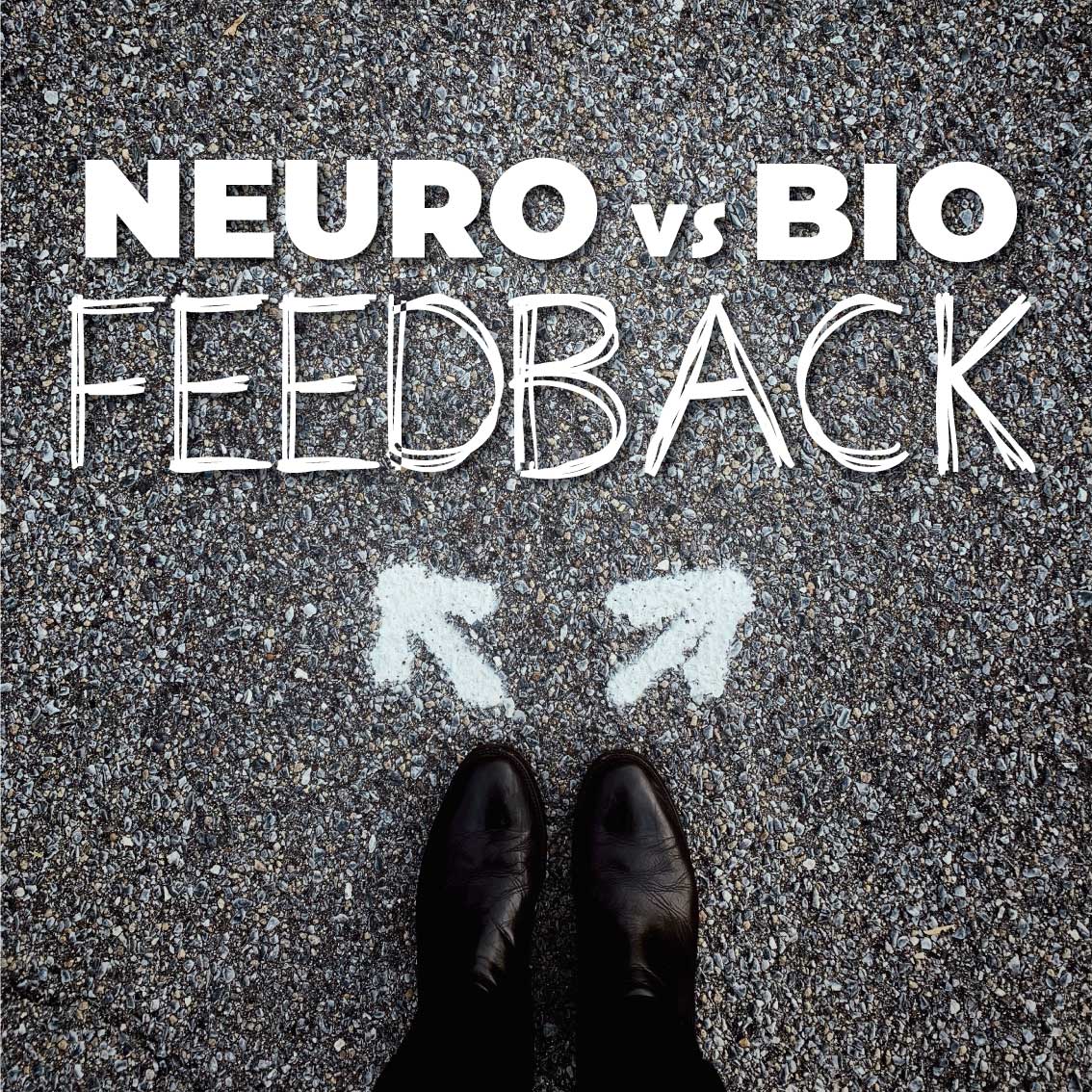Neurofeedback vs Biofeedback

What Is the Difference Between Biofeedback and Neurofeedback?
When it comes to health and wellness modalities, there can be a lot of confusion in the terminology. The same is true of the terms “biofeedback” and “neurofeedback.” Of the two terms, more people are familiar with biofeedback than with neurofeedback. Some people say to me,
“I have heard of biofeedback, but not neurofeedback. What is the difference?”
It All Starts With Feedback
Let me start by explaining what both of these terms have in common - feedback. What do you think of when you hear the word “feedback”? Personally, I associate the word with information that we give to or receive from others. It can be positive, negative, or constructive information. We give feedback to each other all day long, and we ask others for it as well.
Why do we do that? In most cases, we want the information so we can make appropriate adjustments in our work, actions, appearance, etc. Feedback can be verbal: “Um, no, you look better with your shirt tucked than un-tucked.” Or it can be non-verbal like when you nod or shake your head in approval or disapproval of your child’ actions on the playground.
When you receive outstanding customer service from a business, you may give them positive feedback in the form of 5-star ratings and great reviews in the comments section. On the flipside, you probably give businesses negative feedback if your service was less than impressive. Hopefully, businesses use constructive feedback to make appropriate changes based on the responses they receive from their customers.
The Use of Biofeedback
With this understanding, you now may guess that biofeedback has something to do with the feedback about your biological or bodily activity. And neurofeedback is the feedback about your neurons or brain cells.
The medical field often uses biofeedback as a generic, all-encompassing term. After all, when we say body, we usually mean the whole body, including the brain. They tend to reserve neurofeedback as a specific term that only applies to the brain.
Medical practitioners often use biofeedback to improve a particular physiological activity. Years ago, my husband went to a TMJ clinic where they offered a session of biofeedback treatment. The intent was to help him to unlearn the physical motion of constantly clenching his jaw. The provider attached sensors to the lower part of his face. The computer screen in front of him showed a green light when his jaw was relaxed and a red light when he tightened his jaw muscles.
When repeated over a period of time, this kind of exercise in awareness can help improve body function naturally. Biofeedback can help individuals learn to lower their racing heart rate, reduce blood pressure, manage chronic pain, and even regain control over incontinence.
The Benefits of Neurofeedback
Neurofeedback is a specific type of biofeedback that utilizes the power of the brain as the master controller of the whole body. Therefore, many people can achieve the same and even greater results by using neurofeedback rather than biofeedback equipment.
Why invest in several sessions of biofeedback for each separate physical concern? You can accomplish multiple things at once by training the brain with neurofeedback. Many clients seek neurofeedback for specific concerns and end up seeing many more benefits because of their brain’s overall functional improvement.
For example, you may bring your child in for some brain training to help them manage their sleep better. But within a few sessions, you may notice that improved sleep is not the only new development. You may see that they wake up in a better mood, are more cooperative with their siblings, have far fewer temper tantrums, and are suddenly showing interest in reading books.
It’s like a positive domino effect. And the possibilities are endless. When your brain works better, you work better!
"In some ways neurofeedback is similar to watching someone's face during a conversation. If you see smiles or slight nods, you're rewarded, and you go on telling your story or making your point. But the moment your conversation partner looks bored or shifts her gaze, you'll start to wrap up or change the topic. In neurofeedback the reward is a tone or movement on the screen instead of a smile, and the inhibition is far more neutral than a frown-it's simply an undesired pattern." The Body Keeps the Score, Bessel Van Der Kolk, MD, page 316.
NeurOptimal® Neurofeedback for Optimal Results
There are several types of biofeedback and neurofeedback equipment on the market today. I chose the NeurOptimal® system for our practice at Beaverton Neurofeedback. Backed by cutting-edge science, it is non-invasive and user-friendly to operate. NeurOptimal® has helped millions of children and adults with issues ranging from insomnia to migraines to ADHD.
If you are ready to experience optimal brain function for optimal wellness, reach out today and schedule your appointment. You will be on your way to your best self.




